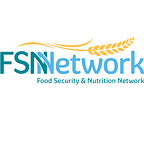From the Community Toolbox: Making the Jump from a Lesson Learned to Adapting an Activity
By: Eric Friesth, Adaptive Operations Advisor, IDEAL
Lessons learned identified during research and evaluations or during reflection and learning events are valuable currency for adapting and improving food security programming. In IDEAL’s work with strategic learning advisors (SLAs) and leads across many of USAID Bureau of Humanitarian Assistance’s (BHA’s) resilience food security activities (RFSA) a couple common challenges with lessons learned popped up. How do we remember the lessons we have learned and how do we make sure to apply them when there is an opportunity? Their answer: We track what we learn, plan how it will be used, and hold ourselves accountable to our plans.
Two SLAs addressed these challenges by using the tools described below.
Nuyok Activity in Uganda
Rodwell Sibanda works on the Nuyok activity, a USAID-BHA funded RFSA in Uganda led by Catholic Relief Services in consortium with six implementing partners. In response to this challenge, he utilized two complementary tools, a Learning to Action Discussion Guide for guiding critical conversations with participants in the field and a corresponding lessons learned spreadsheet for documenting lessons and a corresponding action plan.
During Nuyok’s quarterly pause and reflect (P&R) meetings, Rodwell and his team facilitate reflection on project information, including the qualitative data gathered through the Learning to Action Discussion Guides. A product of these reflections was the identification of lessons learned, but Rodwell noted that the conversations ended there. For each lesson learned, Rodwell wanted the team to think about how it could be applied in the future and to plan for its application. He used the questions from the lessons learned spreadsheet to prompt discussions and action planning around lessons learned during P&R meetings. This helped the Nuyok team to consider and record the activities affected by the lessons learned, the recommended actions to be taken in response, the people responsible for taking action, and the timeline for implementing any activity changes. “This helped apply the lessons learned,” Rodwell noted. “It helped to improve socialization and awareness across teams.” As a follow-up to this exercise, these actions were revisited during the following quarter’s P&R meeting to discuss progress and consider any early outcomes or need for further adaptations.
Apolou Activity in Uganda
Florence Randari, is the SLA on the Apolou activity, a five-year USAID/BHA-funded RFSA with the goal of improving food and nutrition security in five districts of Karamoja, Uganda. Through IDEAL peer-sharing activities, Florence heard about a Lesson Learned Tracker used by another RFSA. Recognizing the potential of the tool for her activity, she modified it to fit her team’s needs. Specifically, she added several prompting questions to help the team create a path from reflection points to strategic decisions the activity needed to make for improved implementation. Florence reminds us of the fit-for-purpose approach:
“It’s not just taking one tool and adapting it, but rather just taking pieces of it and refining existing tools to increase the value we are getting from them.”
For both activities, these tools proved valuable for facilitating collaborative reflection around:
- planned versus actual outcomes of activities,
- the effect of approaches on participants,
- the efficacy and efficiency of operations for implementation,
- the application of lessons learned,
- action planning for activity adaptation from lessons learned, including defining actors and timelines for follow-up, and
- review of action planning to ensure accountability.
Both examples demonstrate how a very simple tool can be used to make a big difference, that tools can be adapted to fit into any project, and how sharing across projects can lead to helpful innovations. What are you using?
Do you want to learn more about building and sustaining a learning culture? Join us at our next Strategic Learning and Adaptive Management (SLAM) Meeting on October 10 to hear Florence and Cara M. Raboanarielina, Ph.D. from the Maharo RFSA in Madagascar talk about their experiences.
Do you have a tool to share with the FSN Network community? We love spreadsheets (and Word docs, etc.)! Send them to jhaddle@savethechildren.com.
